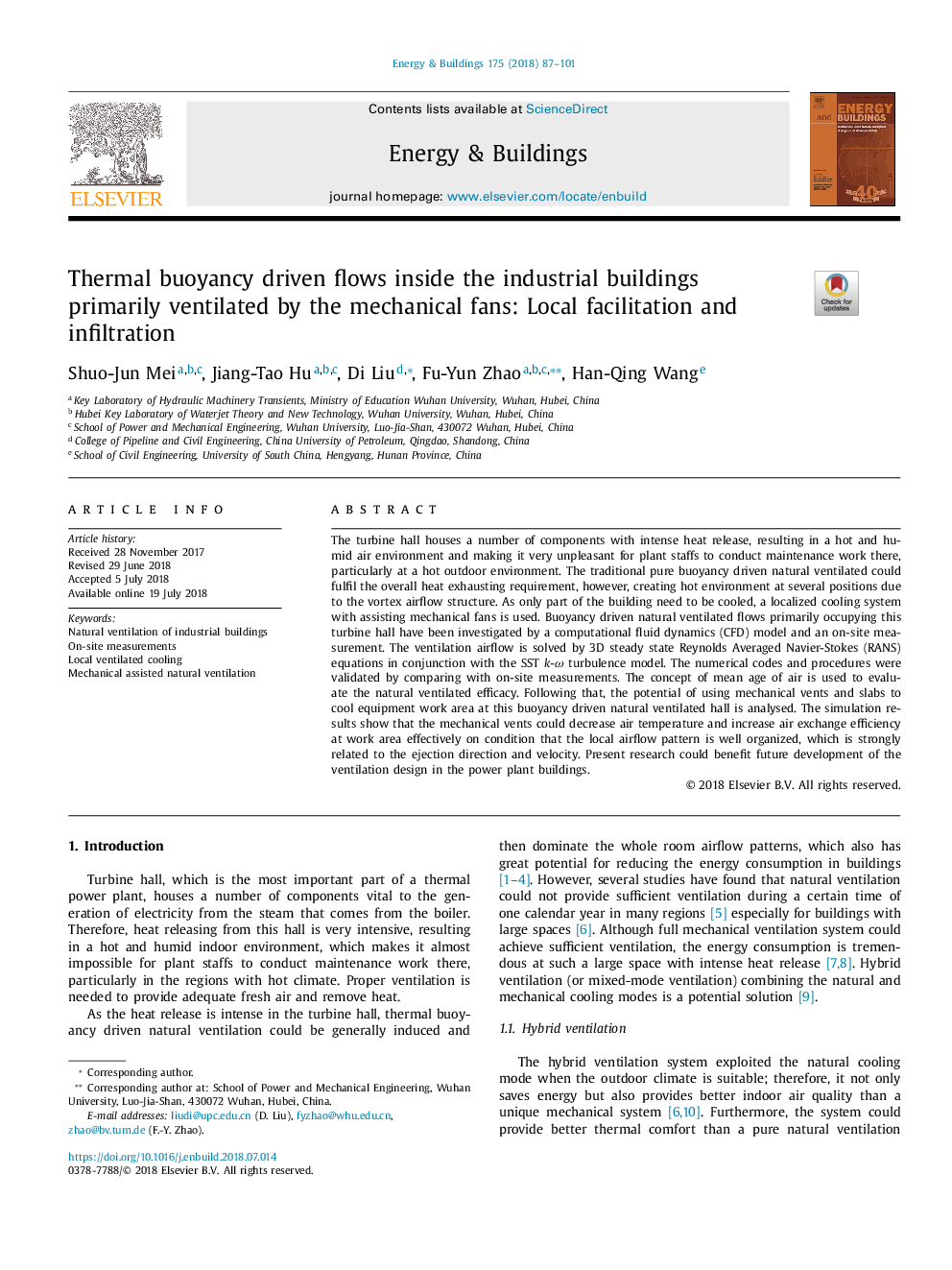| کد مقاله | کد نشریه | سال انتشار | مقاله انگلیسی | نسخه تمام متن |
|---|---|---|---|---|
| 6727090 | 1428915 | 2018 | 15 صفحه PDF | دانلود رایگان |
عنوان انگلیسی مقاله ISI
Thermal buoyancy driven flows inside the industrial buildings primarily ventilated by the mechanical fans: Local facilitation and infiltration
ترجمه فارسی عنوان
جابجایی حرارتی در داخل ساختمان های صنعتی جریان دارد که عمدتا بوسیله طرفداران مکانیکی تهویه می شود: تسهیل و نفوذ داخلی
دانلود مقاله + سفارش ترجمه
دانلود مقاله ISI انگلیسی
رایگان برای ایرانیان
کلمات کلیدی
تهویه طبیعی ساختمان های صنعتی، اندازه گیری های روی سایت، تهویه هوای محلی، تهویه طبیعی مکانیکی،
موضوعات مرتبط
مهندسی و علوم پایه
مهندسی انرژی
انرژی های تجدید پذیر، توسعه پایدار و محیط زیست
چکیده انگلیسی
The turbine hall houses a number of components with intense heat release, resulting in a hot and humid air environment and making it very unpleasant for plant staffs to conduct maintenance work there, particularly at a hot outdoor environment. The traditional pure buoyancy driven natural ventilated could fulfil the overall heat exhausting requirement, however, creating hot environment at several positions due to the vortex airflow structure. As only part of the building need to be cooled, a localized cooling system with assisting mechanical fans is used. Buoyancy driven natural ventilated flows primarily occupying this turbine hall have been investigated by a computational fluid dynamics (CFD) model and an on-site measurement. The ventilation airflow is solved by 3D steady state Reynolds Averaged Navier-Stokes (RANS) equations in conjunction with the SST k-Ï turbulence model. The numerical codes and procedures were validated by comparing with on-site measurements. The concept of mean age of air is used to evaluate the natural ventilated efficacy. Following that, the potential of using mechanical vents and slabs to cool equipment work area at this buoyancy driven natural ventilated hall is analysed. The simulation results show that the mechanical vents could decrease air temperature and increase air exchange efficiency at work area effectively on condition that the local airflow pattern is well organized, which is strongly related to the ejection direction and velocity. Present research could benefit future development of the ventilation design in the power plant buildings.
ناشر
Database: Elsevier - ScienceDirect (ساینس دایرکت)
Journal: Energy and Buildings - Volume 175, 15 September 2018, Pages 87-101
Journal: Energy and Buildings - Volume 175, 15 September 2018, Pages 87-101
نویسندگان
Shuo-Jun Mei, Jiang-Tao Hu, Di Liu, Fu-Yun Zhao, Han-Qing Wang,
